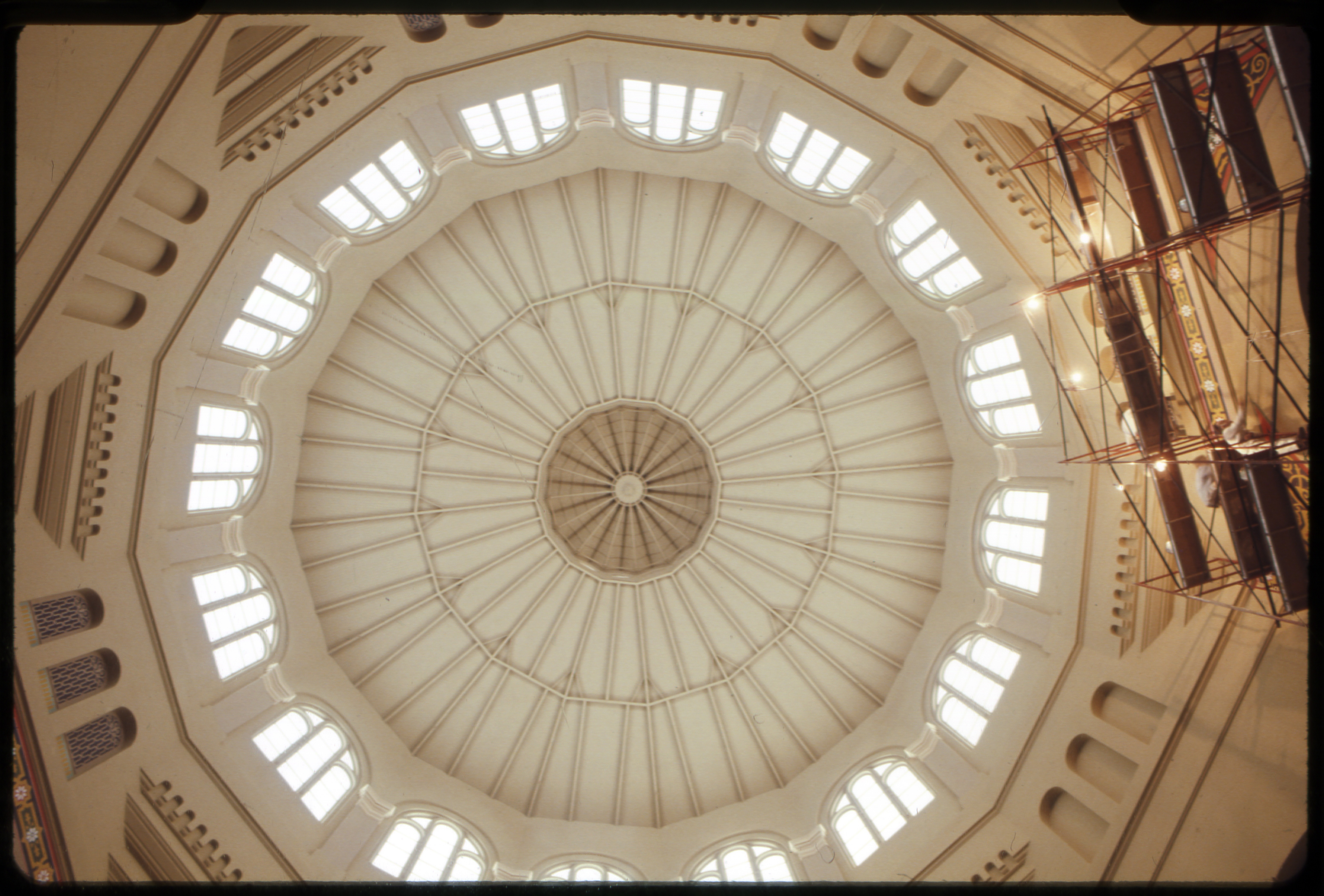The Smithsonian Arts and Industries Building burst into the new century with business as usual. In 2000, it boasted exhibitions like Reflections in Black: A History of Black Photographers, 1840 to the Present, which featured photographs and art work produced by Black photographers, and Exploring Garden Transformations, 1900-2000, which examined five gardens as they appeared at the beginning and end of the century. That year, the building also hosted Smithsonian Gardens annual orchid show. Children and their parents continued to flock to programs at the Discovery Theater.
But the Smithsonian’s leaders, its staff, and pretty much anyone who picked up a newspaper in 2000 knew that the closure of the Arts and Industries Building for major renovations was looming.

When the Smithsonian’s Arts and Industries Building began closing in 2004, it was home to more than 400 employees (including the staff of the Smithsonian Institution Archives), a child care center, a gift shop, and numerous public exhibitions. The then-123-year-old building, designated a National Historic Landmark in 1971, was quickly deteriorating. In 2003, a particularly powerful snowstorm caused the roofs of two similarly-aged buildings to collapse, and after an emergency inspection, engineers determined that the building needed to be closed to public, 20 months earlier than anticipated.
Despite widespread reports in October 2003 about the impending closure, the Arts and Industries Building was still included as one of four possible museum sites in the December 2003 National Museum of African American History and Culture Act. The legislation called for the Smithsonian’s Board of Regents to select the Museum’s location. The group had four options: the site west of the National Museum of American History, the Liberty Loan Federal Building site, Banneker Park, and the Arts and Industries Building.

In his book A Fool’s Errand: Creating the National Museum of African American History and Culture in the Age of Bush, Obama, and Trump, the Museum’s founding director and current Smithsonian Secretary Lonnie G. Bunch, III, wrote that, to him, the Arts and Industries Building was “not a viable option.” He noted that stabilizing the building would be costly, its designation as a National Historic Landmark prevented necessary upgrades, and, perhaps most importantly, the American people deserved a standalone museum. Secretary Bunch wrote, “As much as the site appealed to me as a historian and long-time Smithsonian employee, I concluded that it was not suitable for the newest national museum.”
Spoiler alert: The National Museum of African American History and Culture opened in 2016 at the site west of the National Museum of American History, next to the Washington Monument.
By the time the National Museum of African American History and Culture broke ground in 2012, the Arts and Industries Building was still eight years into its $55-million renovation. In fact, its reopening was delayed again in 2014, when Secretary Wayne G. Clough announced that the project required more funding. Additionally, Clough stated that the Institution’s other projects like the opening of the National Museum of African American History and Culture, took priority.

Two years later, the building quietly opened its doors for special events. It hosted the 2016 Folklife Festival Marketplace and the Asian Pacific American Center’s “Crosslines Culture Lab,” and, later that year, Secretary David Skorton named Rachel Goslins as the director of the Arts and Industries Building. In that announcement, Skorton laid out the Institution’s vision for the building. “I’m confident that the Arts and Industries Building will become a laboratory to try new things, new technologies and new approaches to better engage the millions of Americans visiting the National Mall and the Smithsonian each year.”
Fast forward five years and the Arts and Industries Building is opening as a space for just that. This weekend, the public can visit FUTURES, the first building-wide exploration of the future on the National Mall.
The Arts and Industries Building may have had a slow start to the 21 century, but its ~future~ is certainly bright.
Related Resources
- The Arts and Industries Building history, Smithsonian Institution Archives
- “Smithsonian Accelerates Arts & Industries Closing” by Jacqueline Trescott, Washington Post, April 1, 2000
- “Extensive Leaks in the Nation’s Attic” by Jacqueline Trescott, Washington Post, October 30, 2003
- “Smithsonian will not reopen Arts and Industries Building after renovation” by Katherine Boyle, Washington Post, January 28, 2014
- Dodson, Howard. “A Place of Our Own: The National Museum of African American History and Culture.” Callaloo 28, no. 4 (2015): 730-41.
- Bunch III, Lonnie G. A Fool’s Errand: Creating the National Museum of African American History and Culture in the Age of Bush, Obama, and Trump. Washington, D.C.: Smithsonian Books, 2019.
- “Belle of the Mall: Saving Smithsonian’s Jewel-Like Arts and Industries Building” by Elizabeth Blair, NPR, August 25, 2016
Produced by the Smithsonian Institution Archives. For copyright questions, please see the Terms of Use.

Leave a Comment